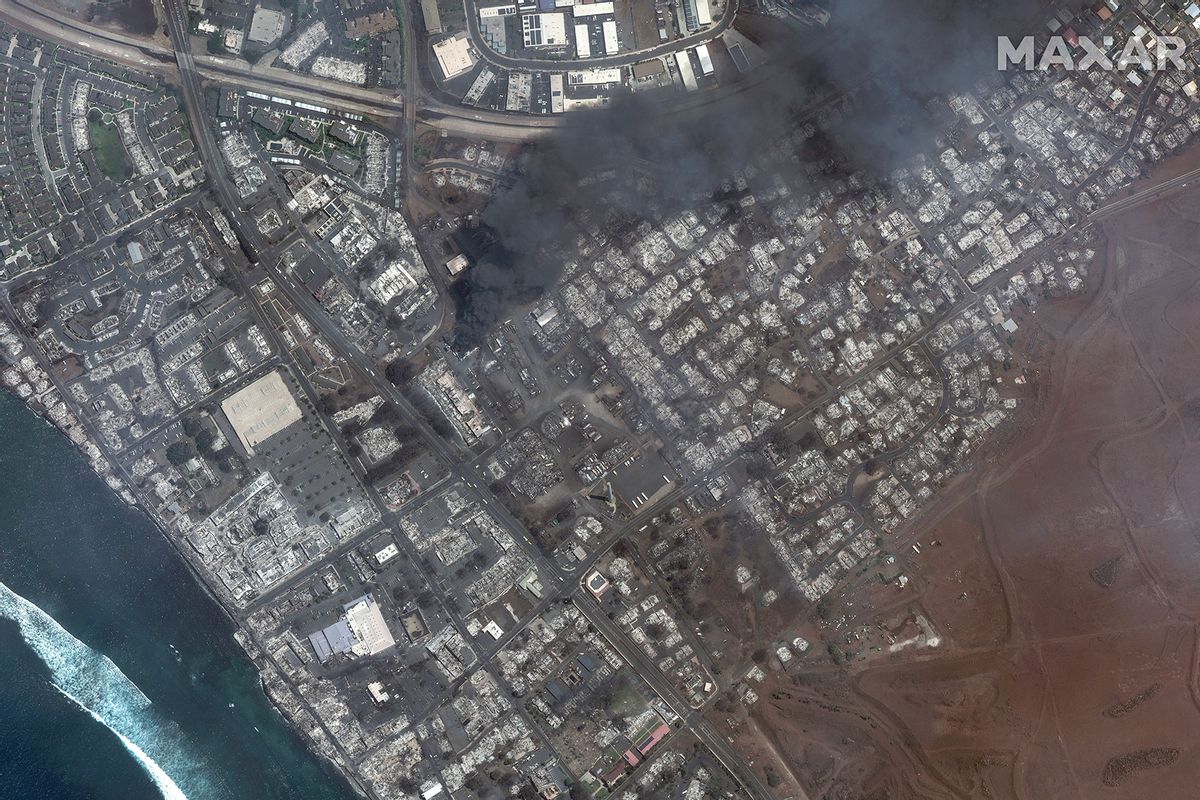Maui’s wildfires overwhelmed hospitals with victims. Is this a preview of our climate future?

Apocalyptic wildfires erupted on the island of Maui this week, spreading rapidly and covering so much territory that some residents were forced to jump into the ocean to avoid the flames. It’s yet another chapter in a record-breaking summer of heatwaves and raging wildfires.
The Hawaii fires, exacerbated by extreme winds from Hurricane Dora, took down power lines, cutting cell service for thousands of residents and prompting a state of emergency. While some people are still being accounted for, the Associated Press reported at least 36 people have died, dozens have been injured and more than 270 structures have been destroyed.
Maui’s emergency and rescue services were already strained before the wildfire, therefore at least six patients had to be transported to neighboring islands like Oahu or Honolulu for care. In January, an air ambulance crash in which three medical personnel were killed revealed huge gaps in emergency care services available on the island: Only one company in the state, Hawaii Life Flight, offers air transport for patients with medical needs.
“Our hospital system in Maui is overburdened with burn patients and people suffering from inhalation,” Hawaii Lt. Gov. Sylvia Luke said in a CNN interview. “We are already in communication with other hospital systems about relieving the burden.”
“Our health system operates within a much more narrow tolerance and bandwidth for surge than ever before.”
The wildfires in Hawaii follow blazes in Canada, Greece and Italy this year. The former of which destroyed nearly 25 million acres and caused a smokey haze to settle over states thousands of miles away for weeks. Extreme heat was recorded in nearly every corner of the globe this summer, with July being the hottest month in recorded human history. Fires and the toxic smoke they spread are just one of many disasters worsened by the burning of fossil fuels, which traps greenhouse gases and cooks the planet.
The situation in Hawaii illuminates that the climate crisis is impacting everyone and the health care system needs to prepare itself to tackle multiple events at once, said Dr. Matthew J. Levy, the deputy director of emergency medicine at Johns Hopkins University & Medicine.
“Our health system operates within a much more narrow tolerance and bandwidth for surge than ever before,” Levy told Salon in a phone interview. “Why that is has to do with a multitude and myriad of factors not the least of which include funding, staffing and space — not to mention the equipment you need.”
The pressure put on an already strained health system in Hawaii may be a grim preview into the future as climate disasters become the “new abnormal.”
Hospitals will be tasked with treating not only the immediate injuries sustained by wildfires, for example, but secondary effects of smoke exposure, which can cause headaches, coughing and bronchitis, or, in severe cases, reduced lung function and even death. Meanwhile, heat-related illness is on the rise, and some people, like those with asthma or other respiratory diseases, older adults, and pregnant women — as well as people who work outside — are at a greater risk for negative health effects.
“We have to remember that during these types of events, oftentimes the people who are the most vulnerable are the ones who have less access to resources, the ones living in economically deprived environments, the ones who don’t have the financial means to get their loved ones or themselves out of harm’s way,” Levy said.
The pressure put on an already strained health system in Hawaii may be a grim preview into the future as climate disasters become the “new abnormal.” Writing in Health Security, Elizabeth Lugten and Neetu Hariharan, both health system advisors contracted to the U.S. Agency for International Development, argued the country’s health systems need to be sizeably beefed up to prepare for waves of patients amid potentially concurrent disasters.
Want more health and science stories in your inbox? Subscribe to Salon’s weekly newsletter The Vulgar Scientist.
“If climate change continues to be ignored by health system practitioners, health systems globally can face enormous strains, exposing longstanding gaps in public health and further exacerbating chronic inequities,” they wrote.
Luke deployed the National Guard and the American Red Cross to provide emergency services to Hawaiian residents. But if unexpected and concurrent disasters happen at once, resources like these could be stretched thin.
One study published in May in the journal Environmental Science & Technology projected half of Phoenix, Arizona could be hospitalized if a blackout and a heat wave coincided, which doesn’t sound too far-fetched considering this summer’s heat and the fact that blackouts nationwide have doubled since 2015. In such a scenario, researchers projected close to 800,000 people could visit an emergency room, despite the city only having 3,000 beds — and that upwards of 12,000 people could die. Similar but less extreme findings were reported for other cities studied in the paper, such as Atlanta and Detroit.
It’s possible to increase resilience to climate disasters via maintaining a sufficient workforce, improving early warning systems and re-evaluating disaster planning in light of the evolving climate crisis, according to a 2019 report from the Global Center on Adaptation.
There are also things individuals can do — like reducing exposure to infectious diseases or having an evacuation plan — to prevent and reduce harm. But as the COVID pandemic demonstrated, health care facilities can bend, but they can also break.
“COVID has taught us that our acute care health system can flex and adapt relatively quickly, but not without consequence,” Levy said. “That consequence often comes in the way of staff turnovers and burnout.”
Read more
about our climate future and present

